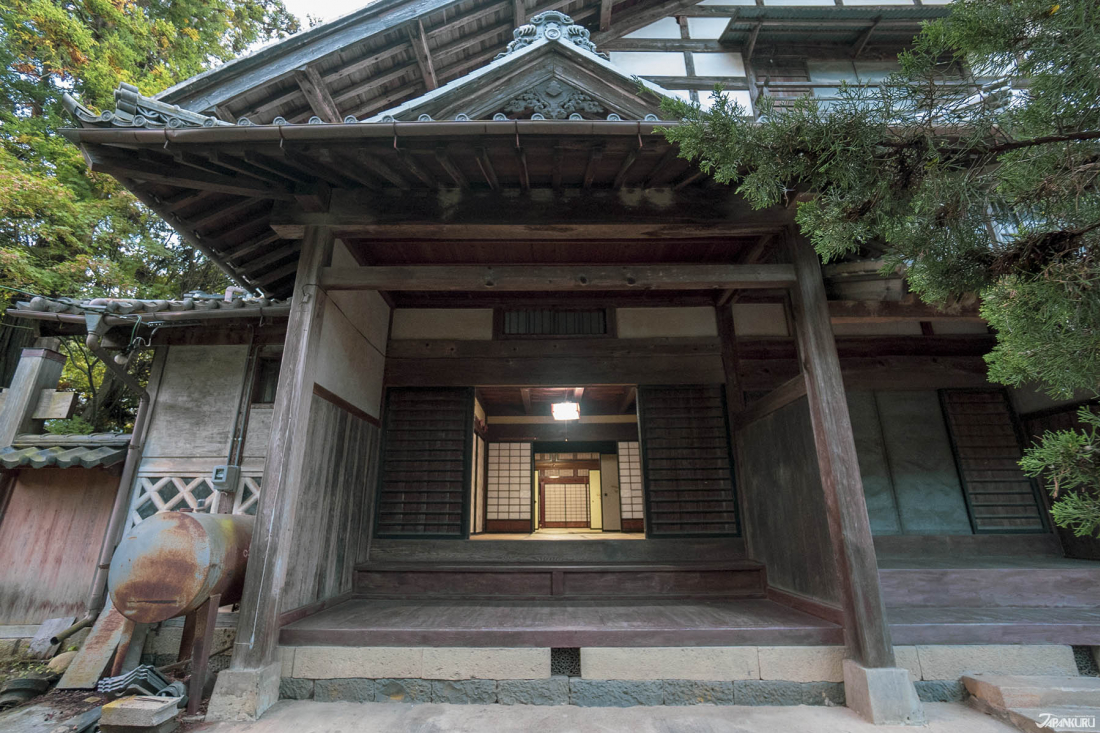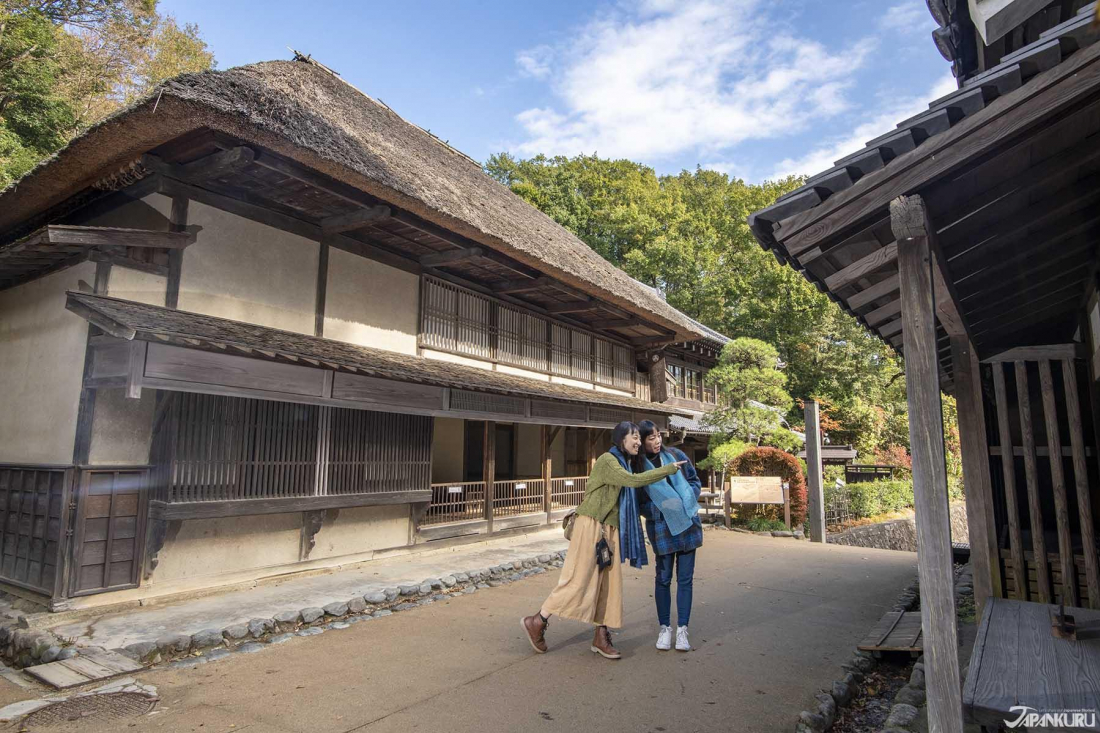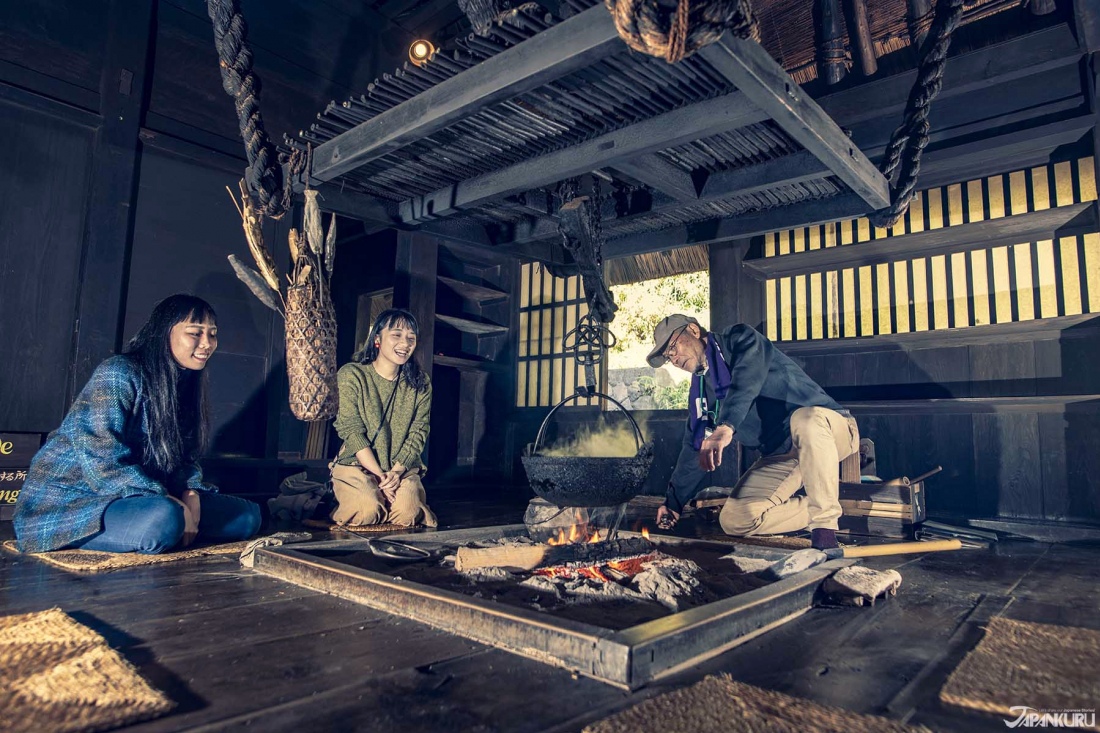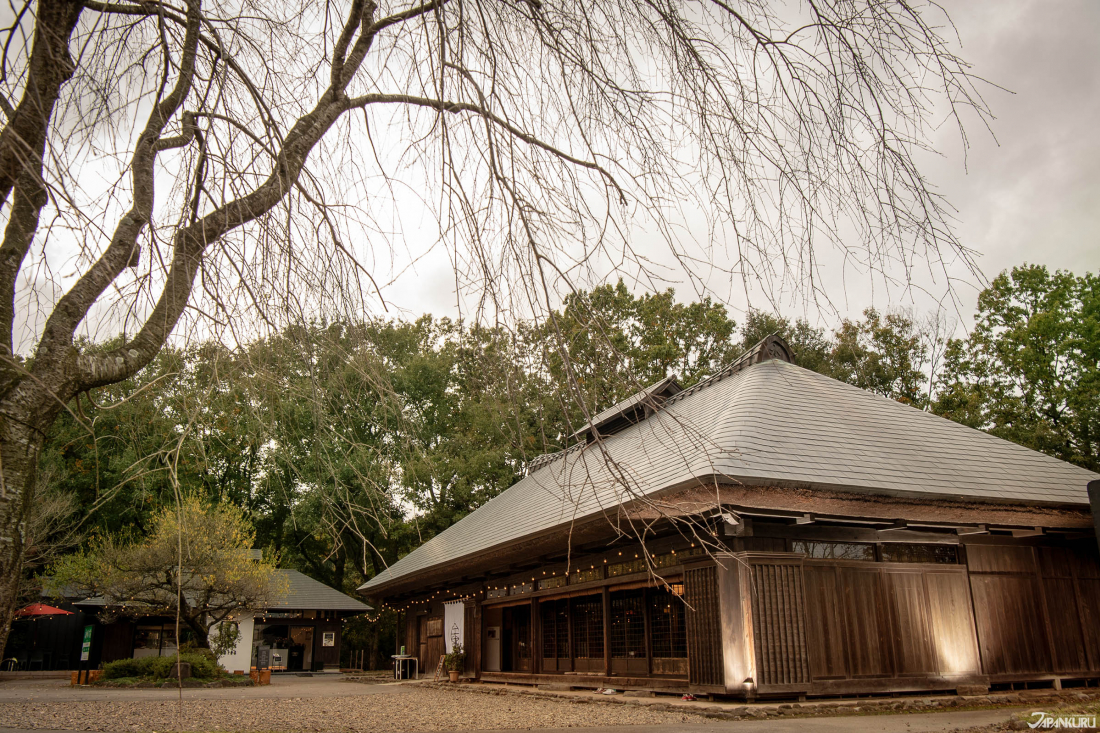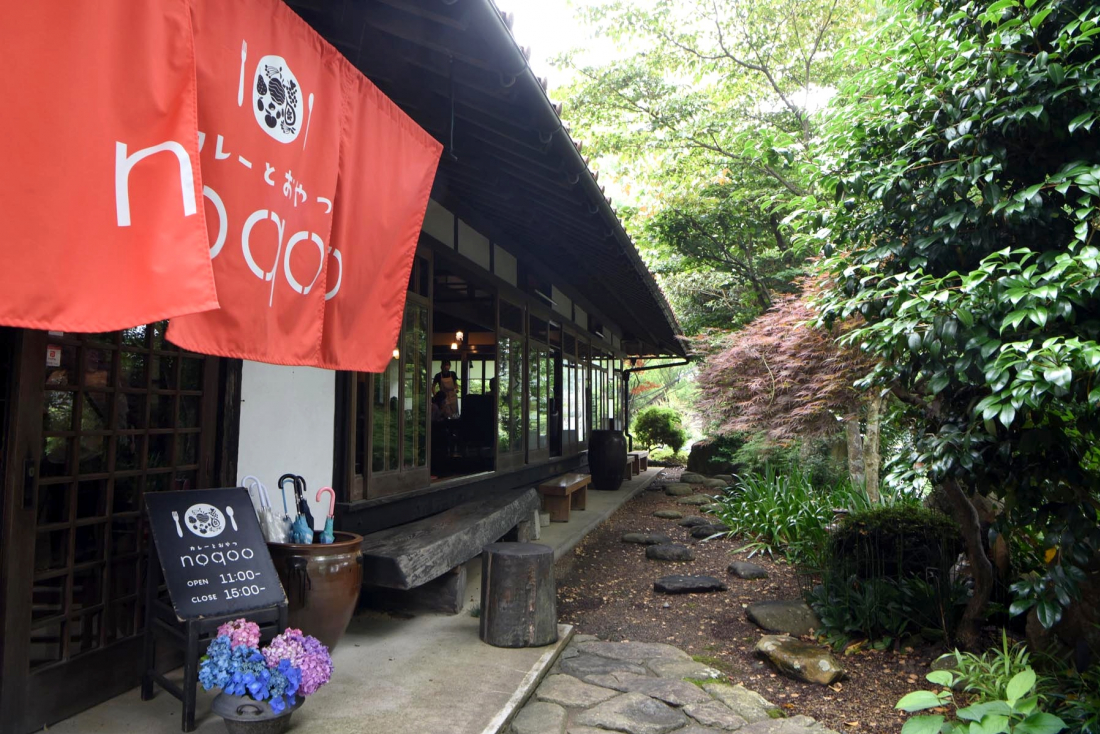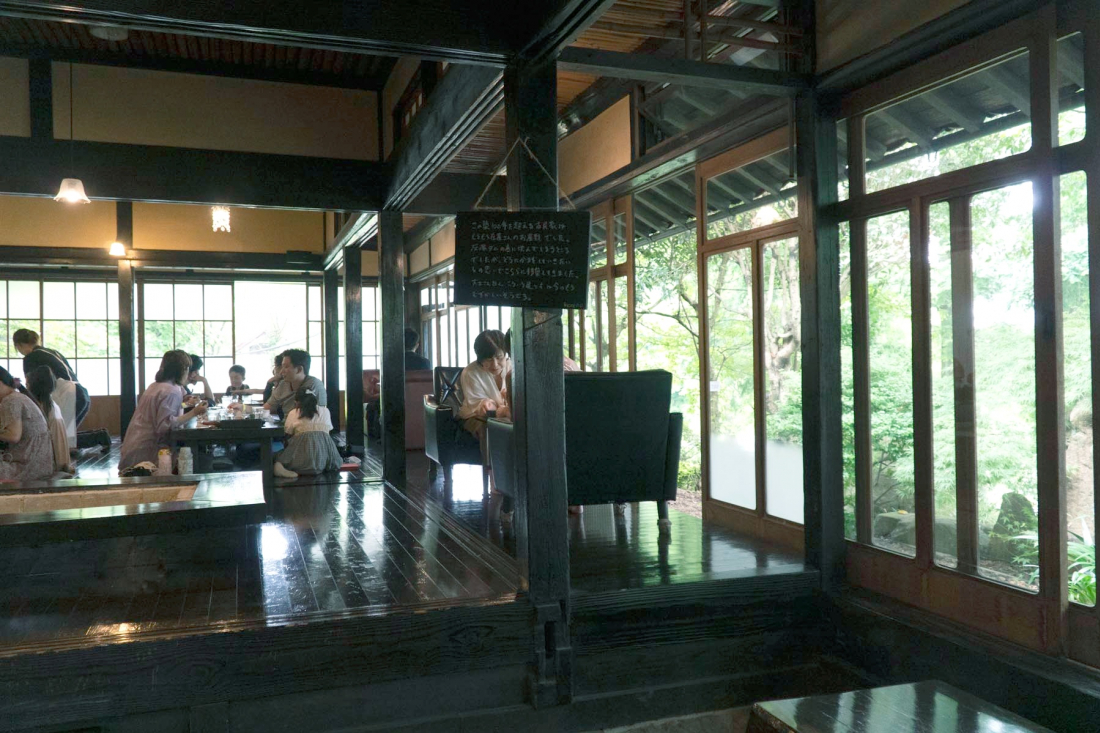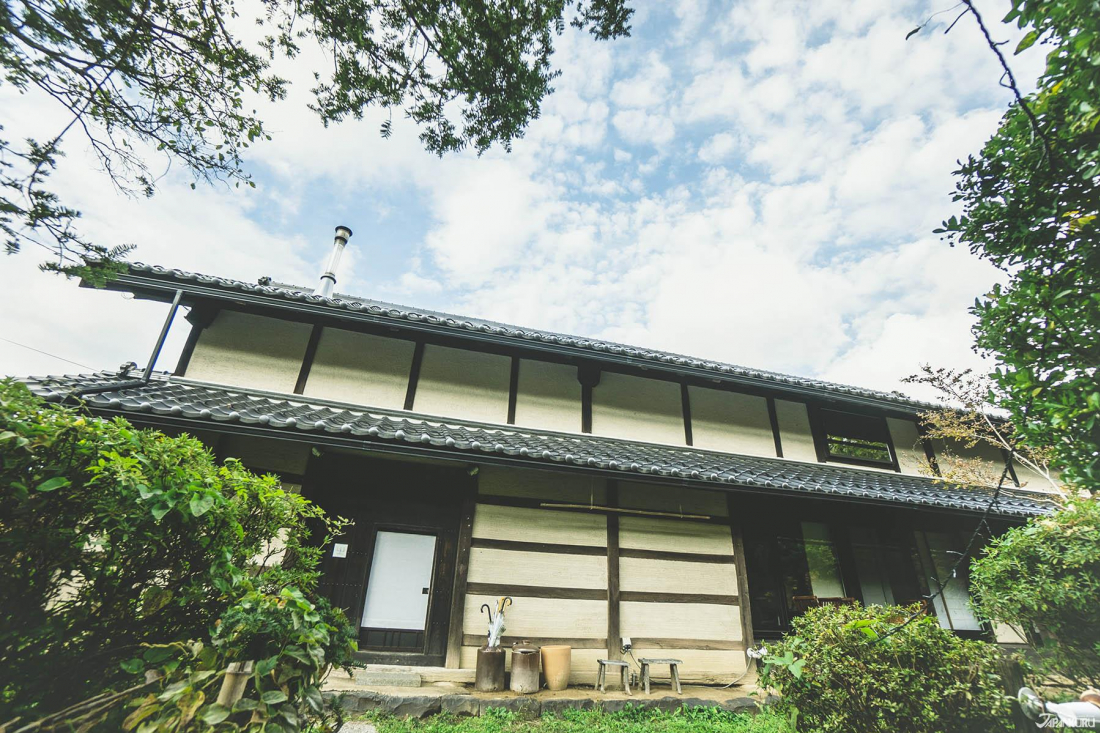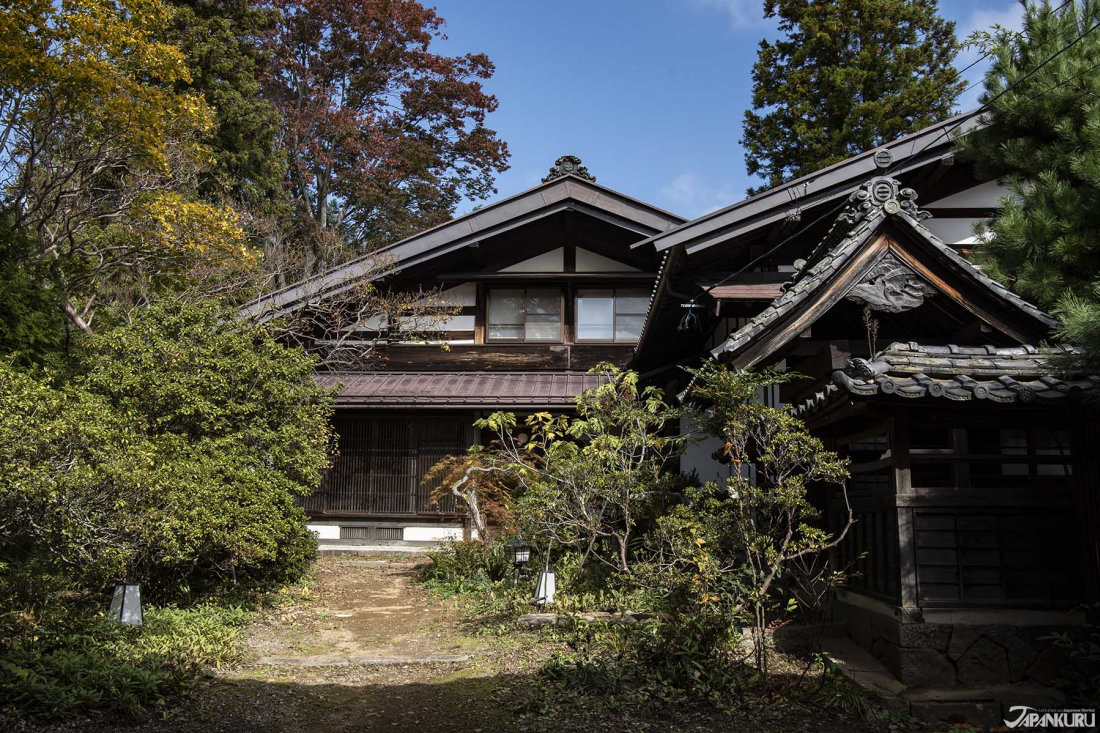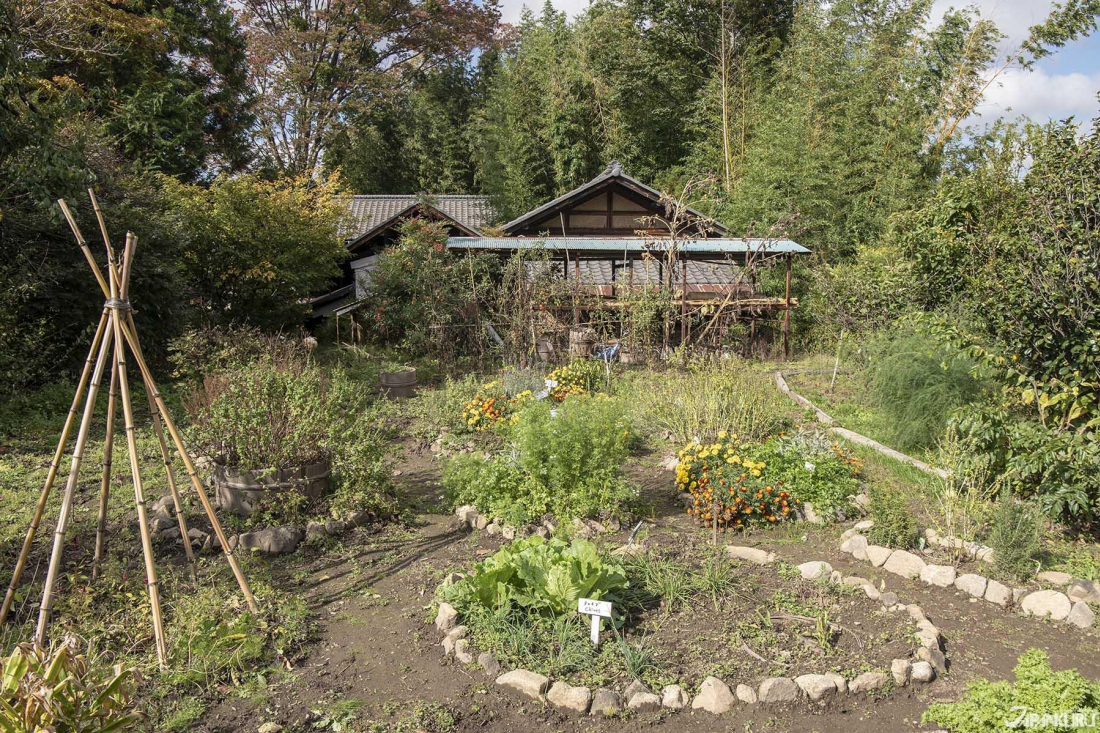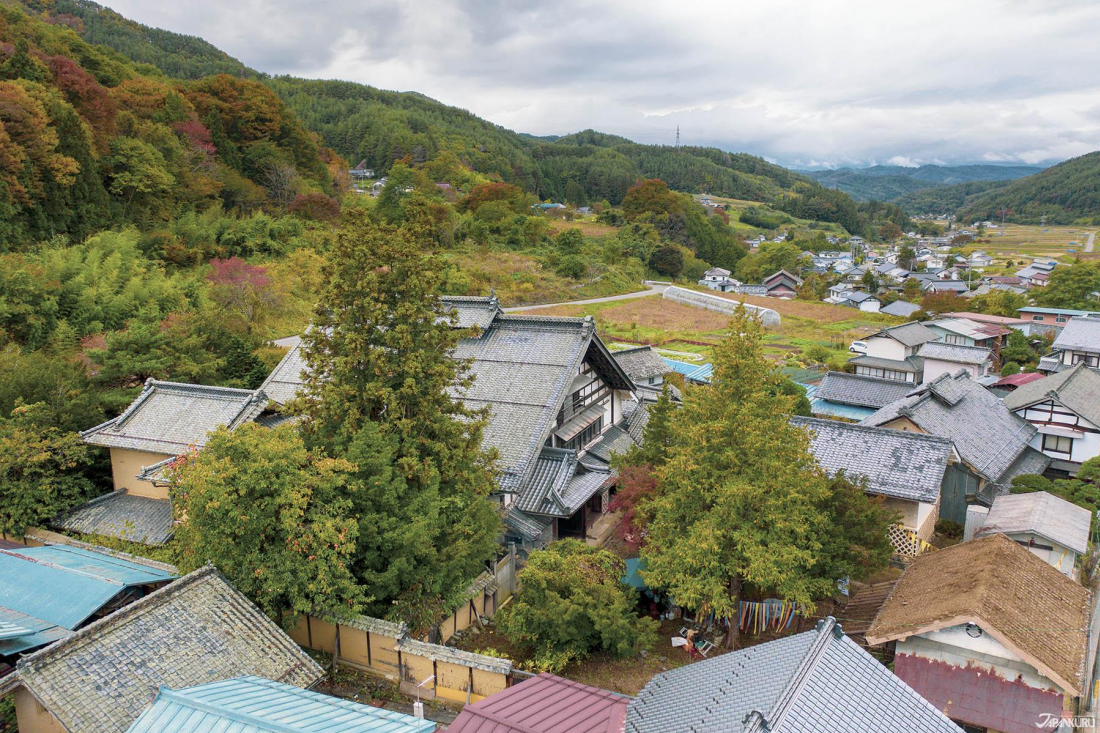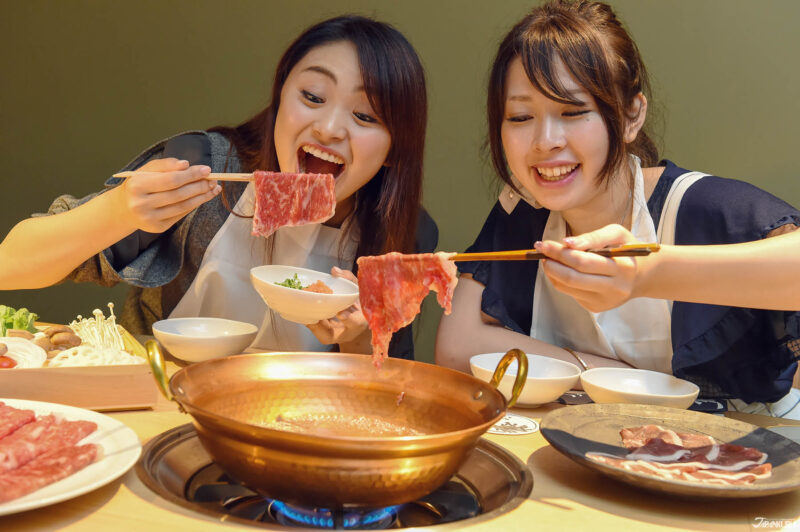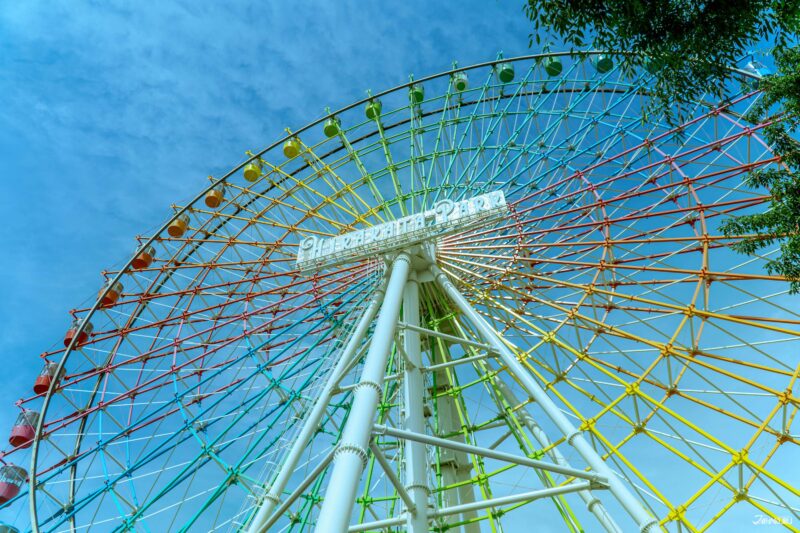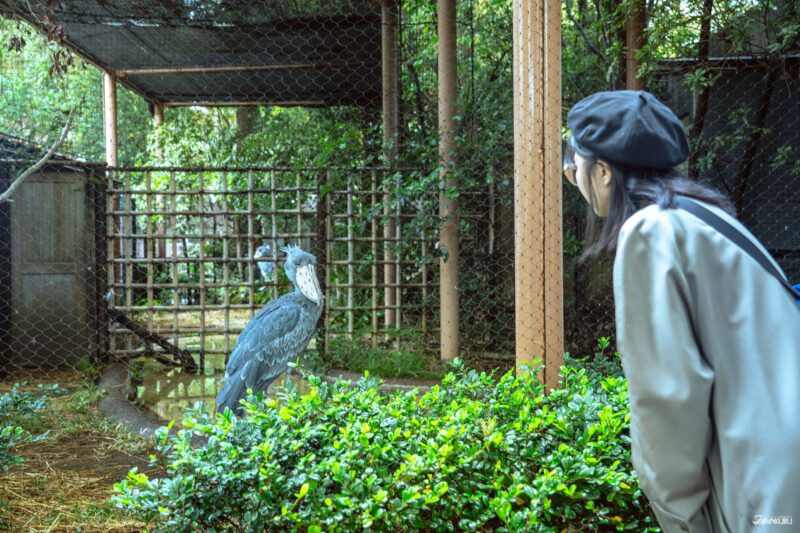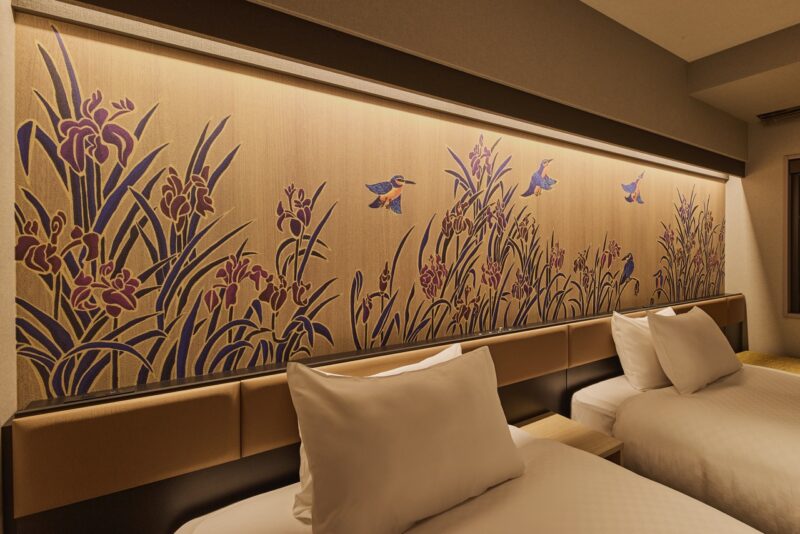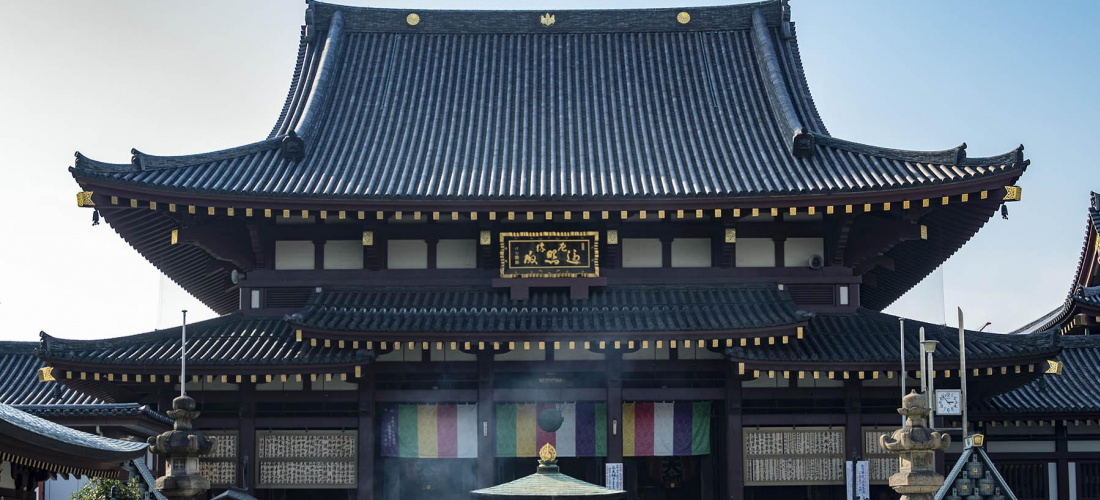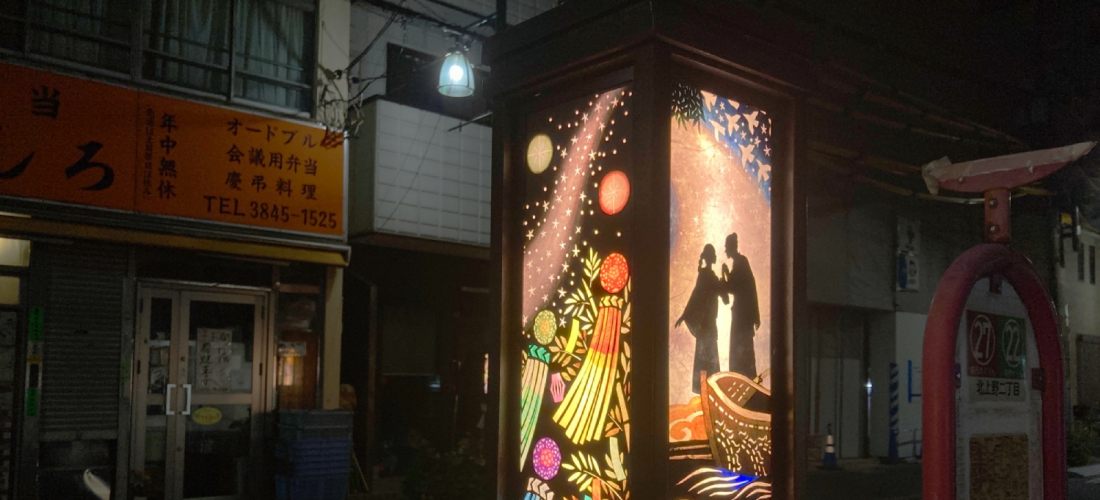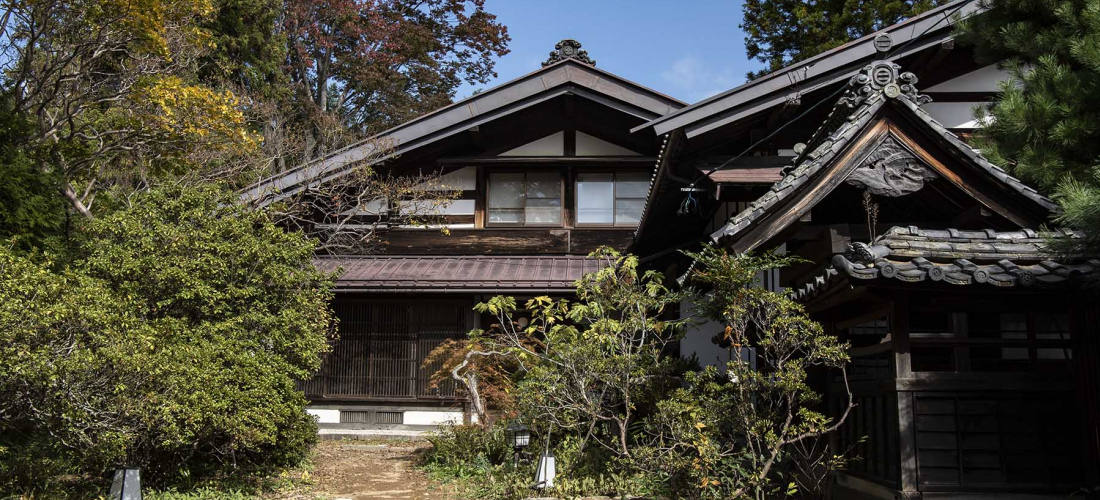
CONTENTS
Kominka are houses with old-fashioned atmosphere and the best of Japanese architecture, and thankfully, some of them are still around.
The Kominka
What is a Japanese kominka? The truth is, these buildings come in as many shapes and sizes as there are styles of architecture in Japan, but put simply a kominka is a traditional Japanese-style house, built anywhere from a few decades to hundreds of years ago. If you can imagine an old-fashioned home in the Japanese countryside, you're probably thinking of a kominka. Kominka often have tatami mat floors and thatched roofs, sometimes with long sturdy beams running the length of the house to hold up the ceiling, or wooden porches tracing a path around the outside of the structure. These pieces of precious cultural history have fallen out of favor as homes in recent decades despite their beautiful architecture, with most residents of Japan now choosing newly-constructed highrises in Tokyo and other big cities instead. But fortunately for the many travelers who visit Japan hoping to catch a glimpse of traditional culture and spend some enjoying the uniquely Japanese atmosphere, there are still spots all over the country where these historic houses are preserved and maintained. In some cases, the buildings are museum pieces meant to be admired, while in others the kominka have been renovated in surprising ways for everyday use, but all of these spots are worth checking out for any kominka lover!
Tour a Kominka
Ever wish you could take a trip back in time to hang out with the samurai, or travel the roads and explore the villages scattered throughout Edo-era Japan (1603-1868)? Well, the closest you might get to that kind of time travel is a trip to the Kawasaki City Japan Open-Air Folk House Museum (AKA Nihon Minka-en/日本民家園). This open-air museum is dedicated to the Japanese kominka, and the spacious grounds cover a whole hillside with a collection of real, centuries-old historic buildings, uprooted from their original locations all over Japan and brought together in one little "village" just outside Tokyo. Visitors can start by visiting the museum's little indoor exhibition space to learn all about the regional and specialized architecture of Japan's kominka, before wandering along the paths and through the dirt-floored foyers and kitchens of the houses.
There are houses from famous traditional villages like Gifu's Shirakawago, local farmhouses that were originally built nearby right in Kawasaki (albeit close to 300 years ago), the homes of shop- and inn-keepers, plus specialized regional architecture like northern-Japanese huts made with snow-resistant straw roofs, and even a kabuki stage built over a century ago for theater-goers in western Japan. The Nihon Minka-en even offers workshops and demonstrations related to traditional Japanese culture, to round out the experience. For anyone with an interest in old-fashioned Japanese houses and traditional culture, there's nowhere better to immerse yourself than the Kawasaki City Japan Open-Air Folk House Museum.
Japan Open-Air Folk House Museum (日本民家園, Nihon Minka-en)
7-1-1 Masugata, Tama Ward, Kawasaki, Kanagawa
Hours: Mar to Oct 9:30 – 17:00 / Nov to Feb 9:30 – 16:30
Admission: adults 500 yen | students 300 yen | seniors 300 yen | children free
Official Website (en)
Relax & Snack in a Kominka
After absorbing the beautiful variety of kominka at the Nihon Minka-en, the next step is to spend some time in one, and fortunately kominka cafes have become increasingly popular around Japan in recent years. These renovated kominka are popping up more and more as it becomes clear that customers enjoy the chance to sit back and relax in this unique Japanese-style atmosphere that isn't usually a part of most people's daily lives, and each cafe has its own unique style and level of modernization.
In Tenpyo Park, a Tochigi park (north of Tokyo) with grassy lawns, woodlands, and some historic monuments, a traditional kominka farmhouse formally named "Yoakemae" now serves as the seating area for the park cafe, 10 Picnic Tables. Bright sun shines through the wall of sliding doors, illuminating tatami mats with low tables, cushions on wooden floors, and some retro seating for those who prefer chairs. Visitors can grab fresh coffee and food made with local Tochigi ingredients from the cafe counter next door, and enjoy a taste of kominka life! (When the weather's especially nice, the narrow porch around the house is a great place to sit, too!)
10 Picnic Tables
Tenpyo Park, 821-1 Kokubunji, Shimotsuke, Tochigi
Hours: 11:00 – 17:00
Official Website (jp)
For a different vibe in a very different part of Japan, Noqoo is a kominka cafe in the little town of Miyoshi, Hiroshima, nestled into the ground of Hirata Farm (which specializes in fruit-picking)! Guests are led to the cafe's raised wooden seating area and brought a menu filled with what might be a surprise addition – curry! Japanese curry, Thai-style curry, and Indian keema curry are just a few of the tasty curry options that visitors can chow down on in this stylish Japanese farmhouse!
This kominka is located right in the middle of a fruit farm, so it might be less of a surprise that the dessert menu offers a variety of decadent options based around whatever fruit is in season at the time. The changing seasonal menu means that the fruit is always at its freshest and most delicious, whether it's a juicy red strawberry placed atop a Japanese-style pudding, or a parfait stuffed with layers of ice cream, granola, and clusters of cherries. If you're in the Hiroshima countryside, there's no better place to grab a cup of coffee and a bite of something delicious!
Noqoo (ノクー)
Hirata Farm, 1747-2 Uedamachi, Miyoshi, Hiroshima
Hours: Mar to Nov 11:00 – 17:00 (open every day) | Dec to Feb 11:00 – 15:00 (closed Thu/Fri)
Official Website (jp)
Sleep Over in a Kominka
Ready to take the next step and stay the night in a kominka guesthouse? Luckily, these guesthouses are also on the increase around Japan, finding new interest among young travelers who appreciate the usual mix of traditional architecture, retro fittings, and a little modern styling. From little carpenters' townhouses in Tsubame-Sanjo to countryside ceramics retreats in Mashiko, these cool accommodations transform traditional buildings of all kinds into relaxing places to rest your head at night, but one region in Nagano has made it a mission in recent years to transform local unused kominka into stylish getaway destinations. As time goes on, more and more of the underutilized buildings in the Shiga Area of Nagano's Matsumoto City are going on to become something totally new.
One of those new kominka guesthouses is Sabou Shiga, run by a cheery proprietor with a fondness for vinyl records and knack for creating cozy spaces. Like many of the newer transformed kominka guesthouses, Sabou Shiga has both a Western-style sleeping space with a bed, and also a Japanese-style room with tatami mat floors and space for Japanese futons, while the breakfast nook and other living spaces are a mix of Japanese and Western-style features. Don't miss the chance to warm any cold fingers by the fire of the wood-burning stove!
You don't actually have to sleep over to enjoy Sabou Shiga, though. Kitchen staff at the guesthouse prepare decadent meals for overnight guests, but reservations can also be made for just a lovely lunch made with local ingredients and recipes.
Sabou Shiga (sabouしが)
448 Tononoiri, Matsumoto, Nagano
Official Website (jp) | Reservations (jp)
While Sabou Shiga is cozy and eclectic, Satoyama villa DEN (a little outside the Shiga area and closer to Matsumoto Station) is both beautifully traditional and extremely modern, with a unique melding of Japanese and European minimalism. While the outside might look like a majestic old Japanese country mansion, inside the rooms are a patchwork of sleek modern design and high-end Japanese-style guest rooms.
Food is an exciting part of staying at DEN as well, but there are no kitchen staff providing meals here. Instead, guests are free to go out and pick fruit and vegetables fresh from the gardens and fields surrounding the old house, cooking it all up in the kominka's modern renovated kitchen. The staff particularly recommend cutting a few sprigs from the herb garden to brew into unique herbal tea, which you can sip while hanging out on the deck in a neighboring rice patty, which overlooks the picturesque kominka and the city far in the distance.
Satoyama villa DEN
5471 Nakayama, Matsumoto, Nagano
Official Website (jp)
Live the Kominka Life
For everyday life, the practicality of a compact Tokyo apartment is a fact of life for millions of people living in Japan, but to enjoy the best of Japanese culture, there's no doubt that spending time in and around kominka is the way to go. These beautiful houses with their unique and varied architecture are emblematic of traditional Japanese culture, and fortunately, there are more and more ways to enjoy them without moving in!
For more info and updates from Japan, check Japankuru for new articles, and don't forget to follow us on Twitter, Instagram, and Facebook!
Details
NAME:Japanese kominka (日本の古民家)
COMMENT
FEATURED MEDIA
VIEW MORE 
A New Tokyo Animal Destination: Relax & Learn About the World’s Animals in Japan
#pr #japankuru #anitouch #anitouchtokyodome #capybara #capybaracafe #animalcafe #tokyotrip #japantrip #카피바라 #애니터치 #아이와가볼만한곳 #도쿄여행 #가족여행 #東京旅遊 #東京親子景點 #日本動物互動體驗 #水豚泡澡 #東京巨蛋城 #เที่ยวญี่ปุ่น2025 #ที่เที่ยวครอบครัว #สวนสัตว์ในร่ม #TokyoDomeCity #anitouchtokyodome

Shohei Ohtani Collab Developed Products & Other Japanese Drugstore Recommendations From Kowa
#pr #japankuru
#kowa #syncronkowa #japanshopping #preworkout #postworkout #tokyoshopping #japantrip #일본쇼핑 #일본이온음료 #오타니 #오타니쇼헤이 #코와 #興和 #日本必買 #日本旅遊 #運動補充能量 #運動飲品 #ช้อปปิ้งญี่ปุ่น #เครื่องดื่มออกกำลังกาย #นักกีฬา #ผลิตภัณฑ์ญี่ปุ่น #อาหารเสริมญี่ปุ่น

도쿄 근교 당일치기 여행 추천! 작은 에도라 불리는 ‘가와고에’
세이부 ‘가와고에 패스(디지털)’ 하나면 편리하게 이동 + 가성비까지 완벽하게! 필름카메라 감성 가득한 레트로 거리 길거리 먹방부터 귀여움 끝판왕 핫플&포토 스폿까지 총집합!
Looking for day trips from Tokyo? Try Kawagoe, AKA Little Edo!
Use the SEIBU KAWAGOE PASS (Digital) for easy, affordable transportation!
Check out the historic streets of Kawagoe for some great street food and plenty of picturesque retro photo ops.
#pr #japankuru #도쿄근교여행 #가와고에 #가와고에패스 #세이부패스 #기모노체험 #가와고에여행 #도쿄여행코스 #도쿄근교당일치기 #세이부가와고에패스
#tokyotrip #kawagoe #tokyodaytrip #seibukawagoepass #kimono #japantrip

Hirakata Park, Osaka: Enjoy the Classic Japanese Theme Park Experience!
#pr #japankuru #hirakatapark #amusementpark #japantrip #osakatrip #familytrip #rollercoaster #retrôvibes #枚方公園 #大阪旅遊 #關西私房景點 #日本親子旅行 #日本遊樂園 #木造雲霄飛車 #히라카타파크 #สวนสนุกฮิราคาตะพาร์ค

🍵Love Matcha? Upgrade Your Matcha Experience With Tsujiri!
・160년 전통 일본 말차 브랜드 츠지리에서 말차 덕후들이 픽한 인기템만 골라봤어요
・抹茶控的天堂!甜點、餅乾、飲品一次滿足,連伴手禮都幫你列好清單了
・ส่องมัทฉะสุดฮิต พร้อมพาเที่ยวร้านดังในอุจิ เกียวโต
#pr #japankuru #matcha #matchalover #uji #kyoto #japantrip #ujimatcha #matchalatte #matchasweets #tsujiri #말차 #말차덕후 #츠지리 #교토여행 #말차라떼 #辻利抹茶 #抹茶控 #日本抹茶 #宇治 #宇治抹茶 #日本伴手禮 #抹茶拿鐵 #抹茶甜點 #มัทฉะ #ของฝากญี่ปุ่น #ชาเขียวญี่ปุ่น #ซึจิริ #เกียวโต

・What Is Nenaito? And How Does This Sleep Care Supplement Work?
・你的睡眠保健品——認識「睡眠茶氨酸錠」
・수면 케어 서플리먼트 ‘네나이토’란?
・ผลิตภัณฑ์เสริมอาหารดูแลการนอน “Nenaito(ネナイト)” คืออะไร?
#pr #japankuru #sleepcare #japanshopping #nenaito #sleepsupplement #asahi #睡眠茶氨酸錠 #睡眠保健 #朝日 #l茶胺酸 #日本藥妝 #日本必買 #일본쇼핑 #수면 #건강하자 #네나이토 #일본영양제 #อาหารเสริมญี่ปุ่น #ช้อปปิ้งญี่ปุ่น #ร้านขายยาญี่ปุ่น #ดูแลตัวเองก่อนนอน #อาซาฮิ

Japanese Drugstore Must-Buys! Essential Items from Hisamitsu® Pharmaceutical
#PR #japankuru #hisamitsu #salonpas #feitas #hisamitsupharmaceutical #japanshopping #tokyoshopping #traveltips #japanhaul #japantrip #japantravel

Whether you grew up with Dragon Ball or you just fell in love with Dragon Ball DAIMA, you'll like the newest JINS collab. Shop this limited-edition Dragon Ball accessory collection to find some of the best Dragon Ball merchandise in Japan!
>> Find out more at Japankuru.com! (link in bio)
#japankuru #dragonball #dragonballdaima #animecollab #japanshopping #jins #japaneseglasses #japantravel #animemerch #pr

This month, Japankuru teamed up with @official_korekoko to invite three influencers (originally from Thailand, China, and Taiwan) on a trip to Yokohama. Check out the article (in Chinese) on Japankuru.com for all of their travel tips and photography hints - and look forward to more cool collaborations coming soon!
【橫濱夜散策 x 教你怎麼拍出網美照 📸✨】
每次來日本玩,是不是都會先找旅日網紅的推薦清單?
這次,我們邀請擁有日本豐富旅遊經驗的🇹🇭泰國、🇨🇳中國、🇹🇼台灣網紅,帶你走進夜晚的橫濱!從玩樂路線到拍照技巧,教你怎麼拍出最美的夜景照。那些熟悉的景點,換個視角說不定會有新發現~快跟他們一起出發吧!
#japankuru #橫濱紅磚倉庫 #汽車道 #中華街 #yokohama #japankuru #橫濱紅磚倉庫 #汽車道 #中華街 #yokohama #yokohamaredbrickwarehouse #yokohamachinatown

If you’re a fan of Vivienne Westwood's Japanese designs, and you’re looking forward to shopping in Harajuku this summer, we’ve got important news for you. Vivienne Westwood RED LABEL Laforet Harajuku is now closed for renovations - but the grand reopening is scheduled for July!
>> Find out more at Japankuru.com! (link in bio)
#japankuru #viviennewestwood #harajuku #omotesando #viviennewestwoodredlabel #viviennewestwoodjapan #비비안웨스트우드 #오모테산도 #하라주쿠 #日本購物 #薇薇安魏斯伍德 #日本時尚 #原宿 #表參道 #japantrip #japanshopping #pr

Ready to see TeamLab in Kyoto!? At TeamLab Biovortex Kyoto, the collective is taking their acclaimed immersive art and bringing it to Japan's ancient capital. We can't wait to see it for ourselves this autumn!
>> Find out more at Japankuru.com! (link in bio)
#japankuru #teamlab #teamlabbiovortex #kyoto #kyototrip #japantravel #artnews
Photos courtesy of teamLab, Exhibition view of teamLab Biovortex Kyoto, 2025, Kyoto ® teamLab, courtesy Pace Gallery

Japanese Makeup Shopping • A Trip to Kamakura & Enoshima With Canmake’s Cool-Toned Summer Makeup
#pr #canmake #enoshima #enoden #에노시마 #캔메이크 #japanesemakeup #japanesecosmetics

⚔️The Robot Restaurant is gone, but the Samurai Restaurant is here to take its place. Check it out, and don't forget your coupon!
🍣신주쿠의 명소 로봇 레스토랑이 사무라이 레스토랑으로 부활! 절찬 쿠폰 발급중
💃18歲以上才能入場的歌舞秀,和你想的不一樣!拿好優惠券去看看~
#tokyo #shinjuku #samurairestaurant #robotrestaurant #tokyotrip #도쿄여행 #신주쿠 #사무라이레스토랑 #이색체험 #할인이벤트 #歌舞伎町 #東京景點 #武士餐廳 #日本表演 #日本文化體驗 #japankuru #japantrip #japantravel #japanlovers #japan_of_insta

Japanese appliance & electronics shopping with our KOJIMA x BicCamera coupon!
用JAPANKURU的KOJIMA x BicCamera優惠券買這些正好❤️
코지마 x 빅 카메라 쿠폰으로 일본 가전 제품 쇼핑하기
#pr #japankuru #japanshopping #kojima #biccamera #japaneseskincare #yaman #dji #osmopocket3 #skincaredevice #日本購物 #美容儀 #相機 #雅萌 #日本家電 #일본여행 #면세 #여행꿀팁 #일본쇼핑리스트 #쿠폰 #일본쇼핑 #일본브랜드 #할인 #코지마 #빅카메라 #japankurucoupon

